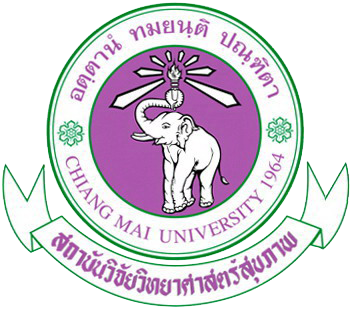HIVNAT 175: Bone-D Study
Study title
Bone health and vitamin D status among perinatally HIV-infected Asian children and adolescents with virological suppression
Study Code
HIVNAT 175: Bone-D Study
Network
HIVNAT
Study PI
Tavitiya Sudjaritruk, MD, ScM
Study Co PI
Prof. Virat Sirisanthana, M.D.
Linda Aurpibul, M.D.
Study sites
Thailand
- HIV Netherlands Australia Thailand Research Collaboration (HIV-NAT), The Thai Red Cross AIDS Research Centre, Bangkok
- Faculty of Medicine Srinakarin Hospital, Khon Kaen University, Khon Kaen
- Faculty of Medicine and Research Institutes for Health Sciences, Chiang Mai University, Chiang Mai
Indonesia
Cipto Mangunkusumo Hospital, Jakarta
Funding agency
amfAR, Therapeutics Research, Education, and AIDS Training in Asia (TREAT Asia) through an unrestricted grant from ViiV Healthcare.
Study design
A multicenter, cross-sectional study. The primary objective is to determine prevalence and associated factors of adverse bone health effect among perinatally HIV-infected Asian children and adolescents with virological suppression after receiving antiretroviral therapy (ART). Additionally, the study will assess the independent associations of vitamin D status with systemic inflammation and abnormal bone remodeling among these children and adolescents
Study objective
Primary objective
- To determine the prevalence and associated factors of low bone mineral density, including traditional risk factors and HIV-specific factors, among perinatally HIV-infected Asian children and adolescents with virological suppression after ART.
- To assess the independent associations of vitamin D status with systemic inflammatory process and abnormal bone remodeling process among perinatally HIV-infected Asian children and adolescents with virological suppression after ART.
Secondary objectives
- To determine the prevalence of vitamin D deficiency (25 [OH]D level less than 20 ng/ml) among perinatally HIV-infected Asian children and adolescents with virological suppression after ART.
- To identify the associated factors of vitamin D deficiency among perinatally HIV-infected Asian children and adolescents with virological suppression after ART.
Number of enrolled participants (overall/at RIHES)
400 perinatally HIV-infected children and adolescents ages between 10 and 18 years old receiving HIV care at one of the participating the TREAT Asia Pediatric HIV Observational Database (TApHOD) sites who are virologically suppressed after ART, defined as plasma HIV RNA less than 400 copies/ml within 6 months prior to screening.
For Faculty of Medicine and Research Institutes for Health Sciences (RIHES), Chiang Mai University enrolled 120 perinatally HIV-infected children and adolescents to the study.
Year: started
December 2013
Year: expected to finish
March 2015
Significance
Low BMD is one of the major long-term complications among children and adolescents with perinatally acquired HIV infection receiving ART. Since a great deal of bone mineral accrual occurs during the adolescent years and peak attainment is usually seen at age 18 years, the loss of bone deposition during this period could lead to serious consequences, particularly an increased risk of osteoporosis and bone fragility later of life. However, the prevalence and associated factors of reduced BMD among this group of population are not well identified, especially in resource-constrained countries.
Vitamin D deficiency is prevalent in HIV-infected children and adolescents living in resource-rich countries. However, the data developed from such countries may not be able to generalize to resource-limited countries because of the differences in geographic location, diet, and lifestyle. Additionally, vitamin D deficiency has been reported as a risk factor of chronic systemic inflammation and abnormal bone remodeling in general populations. Nevertheless, the associations of vitamin D status with systemic inflammation and abnormal bone remodeling among HIV-infected individuals, particularly children and adolescents, has not been extensively investigated.
This study will provide important information about the prevalence and associated factors of low BMD among perinatally HIV-infected children and adolescents living in resource-constrained countries, including Thailand and Indonesia. Additionally and importantly, this study will investigate the associations of vitamin D status with systemic inflammation and abnormal bone remodeling among this population which are considered as the critical research questions in pediatric HIV/AIDS field and are urgently required specific and in-depth investigations.
Therefore, this study will address important research questions, fill gaps in knowledge, and draw clinician attentions to the important long-term medical complications in children and adolescents who are growing up with HIV.




